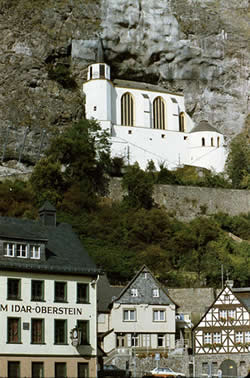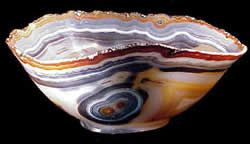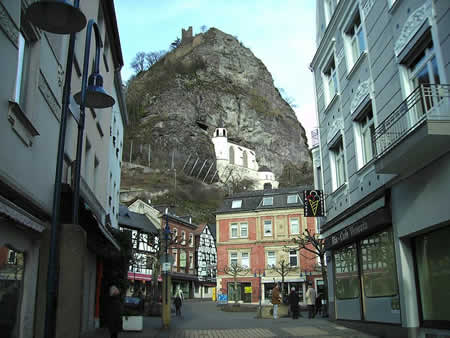|
|
Your Details
|
|
Your Details
|
Reviewed By Andreas Zabczyk
Idar-Oberstein; German Gemstone History The Town of Idar-Oberstein
Idar-Oberstein is a small town situated in the Hunsrück Mountains of the Rhineland-Palatine region in the south west of Germany. Despite its diminutive size, it became one of the leading gem-cutting centers of the world, with a history of mining and lapidary dating back hundreds of years. Positioned on the banks of the Nahe river, the two neighboring villages of Idar and Oberstein are at the center of a region where agate was hand mined for thousands of years. As early as the late 1400s, mechanized mining operations to extract agate, jasper and quartz created employment for gem cutters and stone carvers who flocked to the region. The river was the main energy source used to power the lapidary machines which were directly connected to water wheels. Using these machines was somewhat awkward as the stone-cutters of the time were forced to carry out most of their work whilst lying on their stomachs. Some of these water powered wheels can still be seen in some of the town's historic buildings. In the 1800s the agate deposits along the Nahe River began to be depleted, but by that time gem cutting was the mainstay of its inhabitants. To stay in business, they began to import rough stones from Brazil, where discoveries of amethyst, citrine, tourmaline, topaz and other gemstone materials had been made.  Carved Agate Bowl from Idar-Oberstein
By the end of the nineteenth century, gems from around the world were being shipped to Idar-Oberstein for cutting by its famous artisans, and there were literally hundreds of cutting houses in the town and surrounding villages. However this very fame led to the end of the industry's heyday - wages in the area became too high to warrant cutting less valuable stones and many gem-cutters were forced to emigrate to Brazil. However, many of the artisans and their families remained to continue the tradition through the generations, and today Idar-Oberstein is still famous for some of the finest agate carving in the world. The cutters still import a large variety of other gemstones from around the world for cutting and carving, and master cameo carvers and modern lapidary artists alike still flourish, as do the dealers who import rough stones from gem markets around the world.  The Town of Idar-Oberstein
One of the most famous families in Idar-Oberstein today is the Munsteiner family. Berndt Munsteiner, known as the father of the fantasy cut, is a third-generation cutter who says he was never asked whether he wanted to be a cutter or not, but simply fulfilled his parents' expectations by training in traditional lapidary techniques with his father Viktor. He went on to become a pioneering artist using the techniques he learned at his father's side to produce remarkable designs that are anything but traditional. In true Idar-Oberstein style, his son Tom carries on the family trade and is known as one of the world's leading lapidary artists in his own right. |
